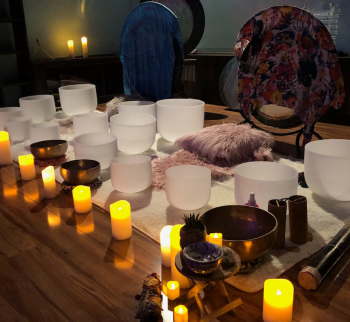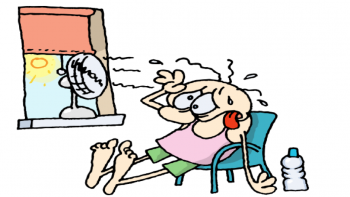Comments
CA PUBLIC HEALTH WARNING - According to the California Public Health Department, the first locally-acquired case of dengue in California was detected in a Pasadena resident last fall.
Dengue fever is a mosquito-borne tropical disease that causes severe flu-like symptoms. It starts with a high fever, headaches, body aches, acute nausea and rashes and, in more severe cases, patients develop severe joint pain and excruciating muscle spasms.
It can be deadly for the five percent of people in whom the illness progresses into dengue hemorrhagic fever where patients exhibit bleeding and plasma leakage, diminished blood platelets and severely low blood pressure.
Dengue in a pregnant woman amplifies the risk that the child she is carrying will be underweight, premature or stillborn.
There is no cure; the medical community can only treat the symptoms up to and including hospitalization of the most severe cases.
Symptoms typically begin three days to two weeks after infection, and recovery generally takes two to seven days. Far longer for dengue hemorrhagic fever patients.
There are four variations of the virus or serotypes and infection with one usually gives lifelong immunity to that type – but only short-term immunity to the others. Subsequent infection with a different variation increases the risk of severe complications.
California’s Public Health Department identified approximately 124 cases a year of dengue between 2018 to 2022, all travel-related, but clusters of locally-acquired cases have occurred in Arizona, Florida, Hawaii, and Texas.
While the Aedes aegypti or Asian tiger mosquito that can carry dengue viruses arrived in California just over two decades ago, in recent years they have proliferated and are found throughout Los Angeles County. However, no dengue-infected mosquitoes have been identified. So far.
But that will change.
In January of 2024, Brazil reported over 600,000 cases of dengue, a 200% increase over the same period in 2023, including all four serotypes – one of which had not been seen in 15 years.
In February the major Brazilian holiday of Carnival allowed the virus to proliferate further and faster amongst residents – with many urban areas declaring public health emergencies, and visitors – with some of the latter undoubtably returning to the United States.
Americans, already impacted by limited and disrespected public health systems are increasingly at risk from a spike in international travel post-Covid, and from political and financial instabilities abroad driving immigration, legal and not.
According to the World Health Organization, dengue cases surged from 500,000 to 5.2 million between 2000 and 2019, a majority of them in Latin America. However, climate change is significantly expanding locales in which the mosquitos that transmit the virus can thrive, leading to recent outbreaks in southern Europe.
Those who have been infected as well as those who are asymptomatic – over fifty percent of those infected do not display symptoms – all carry of the virus.
About half the world’s population is now at risk.
Dr. Gabriela Paz-Bailey of the CDC’s division of vector-borne diseases expects spikes in dengue infections on the continental United States, especially in Florida, Texas, Arizona and... Southern California.
As of 2022, a vaccine – Qdenga – is available for adults, adolescents and children over four years of age, but availability in Brazil could not keep pace with demand. Given vaccine fears in the United States which, despite the numbers of lives saved, multiplied exponentially during the mishandling of the Covid pandemic, the Southland may be facing another epidemic.
Rising average temperatures in Los Angeles and the impacts of El Niño and the recent atmospheric river rain leaving pools of standing water are creating ideal conditions for the Aedes aegypti mosquito that can spread the dengue virus far and wide in Los Angeles County.
Where too many cannot afford to visit doctors for every fever so those with mild cases may not be diagnosed and become additional carriers at a time when the mosquitoes will be out in force to transmit the virus to unsuspecting friends and neighbors.
While the risk for acquiring dengue virus still remains low in Los Angeles County, healthcare providers have now been advised to consider a diagnosis of dengue not only in patients recently returned from abroad and exhibiting acute fever, but also in patients with no travel history with suggestive symptoms including fever, muscle spasms, aching bones and joints, pain behind the eyes, nausea, vomiting and unexplained rashes.
Angelenos should take rigorous precautions to avoid being bitten not only this mosquito season but as they continue to lengthen in the future.
Transmission can also be prevented by mosquito elimination: across the County, people should remove all standing water including the small amounts caught in the leaf angles and blossoms of some flowers and shrubs as well as in the saucers of potted plants, both outside and inside houses, apartments, and offices.
Mosquitoes can mature from eggs to blood-sucking and virus transmitting adults in as little as five days. Ensure water barrels have appropriate insect barriers and that swimming pools and spas are properly sanitized, and puddles don’t collect on their covers.
These biters also spread canine heartworm and even pets kept indoors are at risk from mosquitoes breeding inside the house in unemptied drinking dishes and overwatered houseplants.
For further information, contact the Greater Los Angeles Vector Control District. You can also request complementary mosquito fish to patrol ornamental ponds.
(Liz Amsden is a contributor to CityWatch and an activist from Northeast Los Angeles with opinions on much of what goes on in our lives. She has written extensively on the City's budget and services as well as her many other interests and passions. In her real life she works on budgets for film and television where fiction can rarely be as strange as the truth of living in today's world.)
























